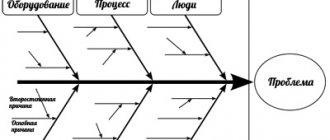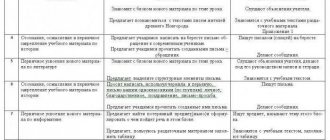Unit 1
1.02. School year. Lexical units on the topic.
This video fragment introduces NLE on the topic. The clarity of the material will help to more easily introduce students to new words, and bright pictures will attract their attention and help them translate all the words and expressions themselves. From now on, acquaintance with NLE becomes bright and colorful, which will attract the attention of even those students who were not interested in learning a foreign language.
1.03. School items. Repetition of The Present Simple
This video fragment will clearly remind students of the Present Simple Tense of the English language. Not only the formation of verb forms in a given tense is given, but also illustrative examples are given, the formation of negative and interrogative sentences is repeated. The rules for adding endings to verbs are also repeated.
1.04. Schedule of lessons. Synonymous verbs to speak
This video fragment uses visual examples to explain the difference in the meanings of the verbs 'to speak, to tell, to say'. There is also a task for choosing the correct verb in certain situations, which will help students better remember the difference in meaning. They will also become more familiar with the use of these verbs in speech.
1.05. Do you like going to school? Repetition of The Past Simple Tense
This lesson asks students to review the use and formation of the Past Simple Tense. The video fragment clearly shows the formation of verb forms in a given tense, their use in affirmative, negative and interrogative sentences. With the help of callouts (means that help highlight information in a video fragment), students’ attention is drawn to the necessary phenomena.
1.07.1. Improving speaking and listening skills. Construction 'there is, there are'
This lesson offers two short video clips. The first of them is aimed at repeating the 'there is/are' construction necessary for students. With the help of this video excerpt, students will remember why this construction is needed, as well as the difference between the forms of the verb 'to be: is/are, was/were'.
1.07.2. The Future Simple Tense (repetition)
This video fragment will remind students, using visual examples, of the formation of verb forms in the Future Simple tense. An explanation is also given of the use of verbs in the given tense form in negative and interrogative sentences. Information is presented in both English and Russian, which will help students gradually memorize the terms used when explaining grammatical rules.
1.08. Barbara's letter. Repetition of degrees of comparison of adjectives
With the help of this video fragment, students will see and remember the formation of degrees of comparison of adjectives using visual examples. We also remember adjectives that form degrees of comparison not according to the rule (exceptions).
1.09. The use of modal verbs in oral speech
This video clip will help students refresh their memory of the meaning and use of modal verbs they know. A short exercise is also offered to consolidate this information.
1.14. Vacations in the city, village, camp. Possessive case of nouns
This video clip helps students remember the possessive case of nouns, its meaning and formation. I also remember irregular plurals, which is necessary when repeating this rule.
1.15. Development of skills and abilities of dialogical speech on the topic “Holidays”
This lesson repeats the question types. This material must be repeated at the beginning of the school year, as it often causes difficulties for students and a large number of errors when constructing dialogical statements. General, special and alternative questions, the order of words in these types of questions and their meaning are repeated.
1.16. Learning to write letters. Developing Writing Skills
In this short video, students will become familiar with the approximate structure of letters. This form is not strict, but since students in modern times do not often write letters, this fragment will be useful, as it provides the structure of the letter and its example.
Interesting answers
- Austria: nature and its protection - message report
Austria is a small country in the center of Europe. Approximately 80% of the state's territory is occupied by mountains - the Alps. Famous for its ski resorts. And not only. - Animals
- Report by Opera Ivan Susanin Glinka on music
Everyone knows the great Russian composer Mikhail Ivanovich Glinka, who was born on June 1, 1804 in the Smolensk province. His mother did not want to bother raising her son and gave him to his grandmother, who spoiled the child very much. - Czech Republic - message report
The Czech Republic is a unique small state in terms of its territory, a republic in the central part of Europe. The head of the Czech Republic is the president, who is elected by the people in elections. - Report about Chamomile (message 2, 3 class the world around us)
Chamomile is a herbaceous flowering plant from the Asteraceae family. Chamomile blooms in the first year of life. The plant genus includes 20 species, of which the most famous is Chamomile.
Unit 2
2.01. Letters - invitations. Introduction of new lexical units
The video fragment helps introduce NLE on this topic. Students first repeat words and expressions after the speaker, then, with the help of visual material, they must guess the translation themselves. This helps students concentrate.
2.02. Preparing for school exchange. Practicing vocabulary in speech. Intonation of English sentences language
Students become familiar with the general rules of intonation in English sentences. They learn that there are two main types of tones: rising and falling; Examples of affirmative and interrogative sentences are also given.
2.03. Dividing questions. Introduction of grammar topic
This video fragment provides an explanation of a new grammatical topic. Students are introduced to a new type of question, its meaning, use and formation through examples. At the same time, based on examples, students see how the rule is derived, which makes this grammatical topic more accessible to understanding.
2.05. Let's share the news. Development of skills and abilities of dialogical speech
This video clip contains all the studied types of questions for review. Attention is focused on their meaning. Based on examples, students also remember their education, which is necessary to correct unnecessary errors in the development of skills and abilities of dialogical speech.
2.06. The structure 'to be going to'. Introduction of new grammatical material
Students become familiar with the meaning of the construction 'to be going to'. They also remember the rule for using the verb 'to be', with the help of examples they become familiar with and remember the formation of negative and interrogative sentences with this construction. A task is also proposed to reinforce the use of this construction.
2.08. What are you going to do this weekend? Activation of grammatical structure in oral speech
During the lesson, students are invited to become more familiar with the prepositions of time 'at, in, on, for', since they are often encountered when discussing this topic, and in order to avoid their incorrect use, a video fragment is offered. It is accompanied by exercises to consolidate this grammatical material.
2.10. Different 'time' values. Speaking
This lesson introduces students to the different meanings and uses of the word 'time' through visual examples. A task aimed at consolidating new knowledge is also offered.
2.15. Behavior at home and away. Speaking using speech etiquette
This video fragment invites students to get acquainted with such a phenomenon in the English language as conditional sentences. This is educational information to help students avoid mistakes when discussing this topic. Here attention is focused only on the reality/unreality of actions and the use of tenses in conditional sentences of types I and II.
2.16. Preparing for the test
This video fragment is a way to test a task aimed at developing the skills and abilities of perceiving and understanding foreign speech by ear. It also provides an example of the traditional English Christmas carol 'carol', which will help relieve the tense atmosphere at the end of the term before tests. And the bright pictures accompanying the text will attract the attention of all students. If you do not want to use a video fragment, there is an audio recording of this task.
Unit 3
3.02. Use of the verb 'play'
In this lesson, students will learn how to use the article 'the' in expressions with the verb 'play'. Step by step, using the given examples, it is explained that when playing musical instruments, a definite article is used after the verb 'play', and it is absent when playing sports games. A task for the primary consolidation of this grammatical material is also proposed.
3.03. Meaning of 'change'
Using the available video clip, students will learn how to translate and use the word 'change'. Clear examples with bright and understandable pictures show possible translation options, which will also be encountered when discussing the topic of this section. After becoming familiar with the ways of using the word change', students are asked to choose the appropriate word/expression ('change, for a change, exchange') in situations suggested by the speaker.
3.04. Introduction of adjectives on the topic
This video fragment introduces the adjectives necessary to describe character. Carefully selected bright and cheerful visual materials will attract the attention of students, the speaker will involve them in working with new words: first, repetition; then, translation based on the attached pictures, which will help to activate logical thinking, guesswork and interest of students.
3.06. Positive and negative character traits. Negative prefixes in-, un-, im-, non-
In this lesson, students are introduced to negative prefixes as a way of word formation. The video fragment not only introduces them to theoretical material, but also clearly shows how adjectives are formed using negative prefixes. For examples, we selected lexical units that are most often used in the textbook. After the theoretical material, a task is offered aimed at consolidating new knowledge.
3.07. My friend. Activation of vocabulary in speech
This video fragment is proposed to be used instead of audio recording. This will make the task easier and the lessons more varied. This fragment is also aimed at attracting students’ attention and removing certain difficulties when listening to audio recordings (which has always been one of the most difficult tasks for students).
3.08. Use of 'like-dislike' verbs
In this lesson, students recall the verbs necessary to discuss the topic of 'hobbies': like, love, dislike, hate', and the expression 'would like'. They become familiar with the use of infinitives and verbs with –ing after verbs of this group. And after the given theoretical material with illustrative examples, students are asked to choose the correct option themselves. An explanation is provided for each required choice.
3.13. Professions. Introduction and activation of NLE
In this lesson, using a video fragment, new lexical units on the topic 'professions' are introduced. With the help of pictures and a speaker, students are involved in working with NLE from the very beginning of the video fragment. They pronounce NLE and guess the translation. As a small bonus, there are rhymes that students must complete with the required profession.
3.17. The Present Continuous Tense. Introduction of a new grammar topic
The video fragment introduces students to the Present Continuous Tense: the meaning and formation of verb forms in a given tense. The use of forms of the verb 'to be' is repeated depending on the subject. It also explains the rules for adding -ing endings to verbs. After analyzing the theoretical material, a task is offered to choose the correct form of the auxiliary verb, which will once again allow students to see the use of this tense in speech situations.
3.18. The Present Continuous. Interrogative and negative sentences
This video fragment explains to students the formation of negative and interrogative sentences in the Present Continuous tense. The formation of verb forms in a given tense is also repeated. Everything is presented with examples based on the vocabulary of this section and with the help of bright and clear visual materials that attract the attention and interest of students. At the end of the video fragment, students are asked to arrange the words in the required order to obtain a negative and interrogative sentence in a given tense.
3.22. Comparison of the Present Simple and the Present Continuous
In this video fragment, students are asked to compare the use and formation of two tenses: the present simple and the present continuous. Not only the meanings of these tenses are compared, but also the formation of affirmative, negative and interrogative sentences. Examples are given for each of the points mentioned above. All this is accompanied by visual material that makes boring theoretical material interesting and understandable. At the end of the theory, a small task is offered with the participation of students, aimed at consolidating the difference in use.
3.24. Review of English tenses
A video clip is offered that will make this complex grammatical topic easier and attract the attention of students. The whole explanation is based on the principle of the game of 'sea battle', in accordance with the theme, renamed 'time battle'. Students use a video clip to repeat the meaning and education of all the times that they already know. And to reinforce the material, a small exercise is offered that will attract their attention and activate their mental activity.
Option 2
Geographically, Great Britain is a large island to the north-west of mainland Europe. Great Britain is washed by the Atlantic Ocean, the North Sea, the Celtic Sea, the Pas de Calais and the English Channel. Great Britain is the largest of the British Isles, the largest island in Europe; the ninth largest and third most populous island in the world. The UK population is over 60 million people. Politically, Great Britain belongs to the United Kingdom, consisting of Great Britain and Northern Ireland.
The capital of the state and the entire United Kingdom is London. The head of state is nominally considered to be the monarch (currently Queen Elizabeth II). Other major cities and industrial centers are Manchester, Liverpool, Cardiff, Bristol, Edinburgh, Glasgow, Birmingham.
The sights and heritage of Great Britain traditionally include the Royal Palace of Westminster in the capital, the ancient prestigious universities of Oxford and Cambridge, the castles of Edinburgh and Belfast, and the stone structure Stonehenge.
The official languages of Great Britain are English, as well as Welsh (Wales), Scots (Scotland), Irish (Northern Ireland), Gaelic and Cornish.
Great Britain is the birthplace of such outstanding writers as Arthur Conan Doyle, William Shakespeare, James Barrie, Walter Scott, Lewis Carroll, JK Rowling. Scientists Isaac Newton and Charles Darwin, actor and comedian Charlie Chaplin, members of the Beatles musical group were born here.
The national sport is ball football. Several of the most successful football teams in the world are located in the UK, namely Manchester, London, Lierpool. Sports such as table tennis, badminton, cricket, tennis, and golf are also common here.
In Great Britain they are engaged in sheep and cow breeding, coal mining, fishing, and the production of first-class cars.
In terms of the number of adherents, Christianity (Anglicanism, Protestantism) ranks first among religions here; Islam and Judaism are also widespread.
2nd, 3rd grade. The world.




